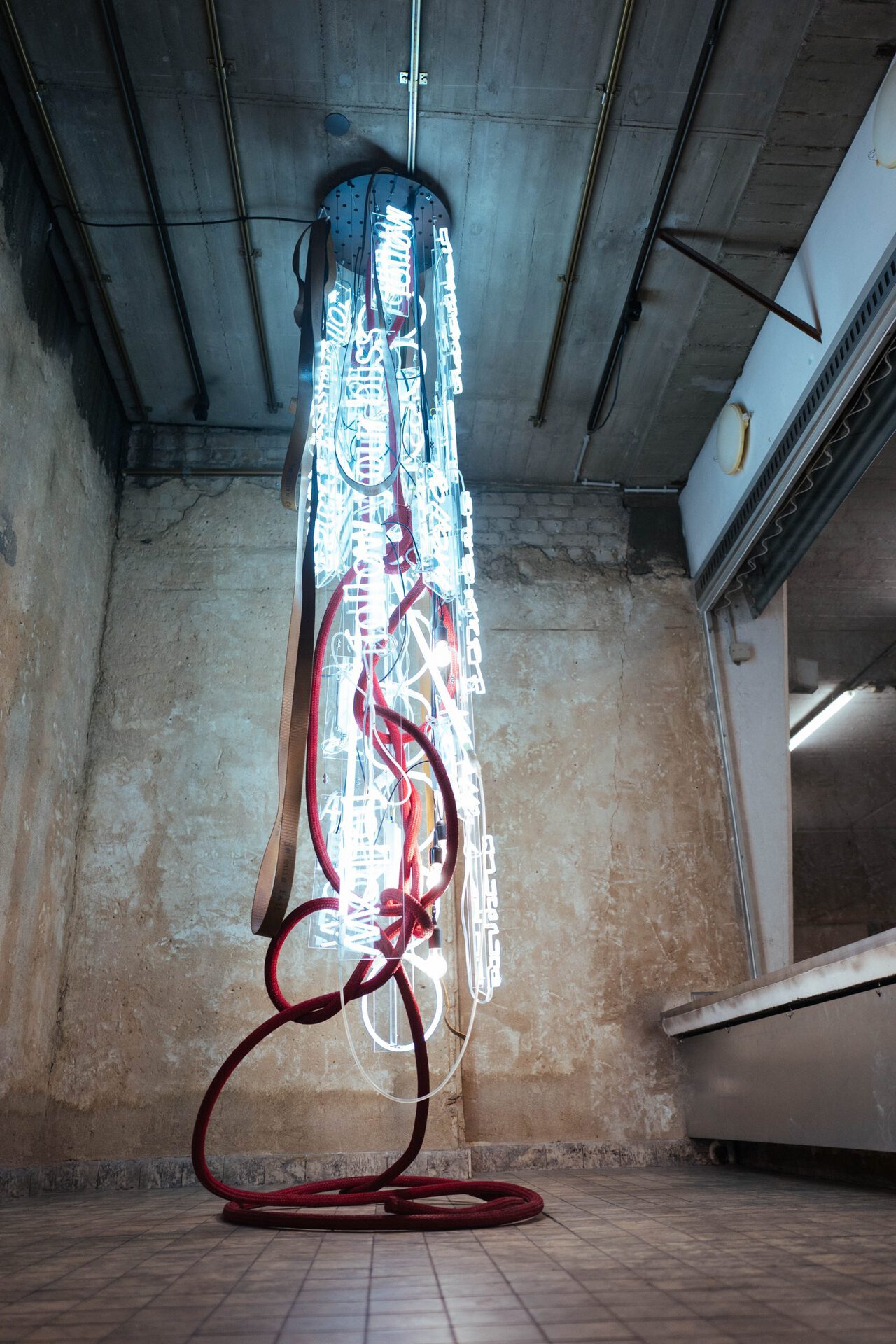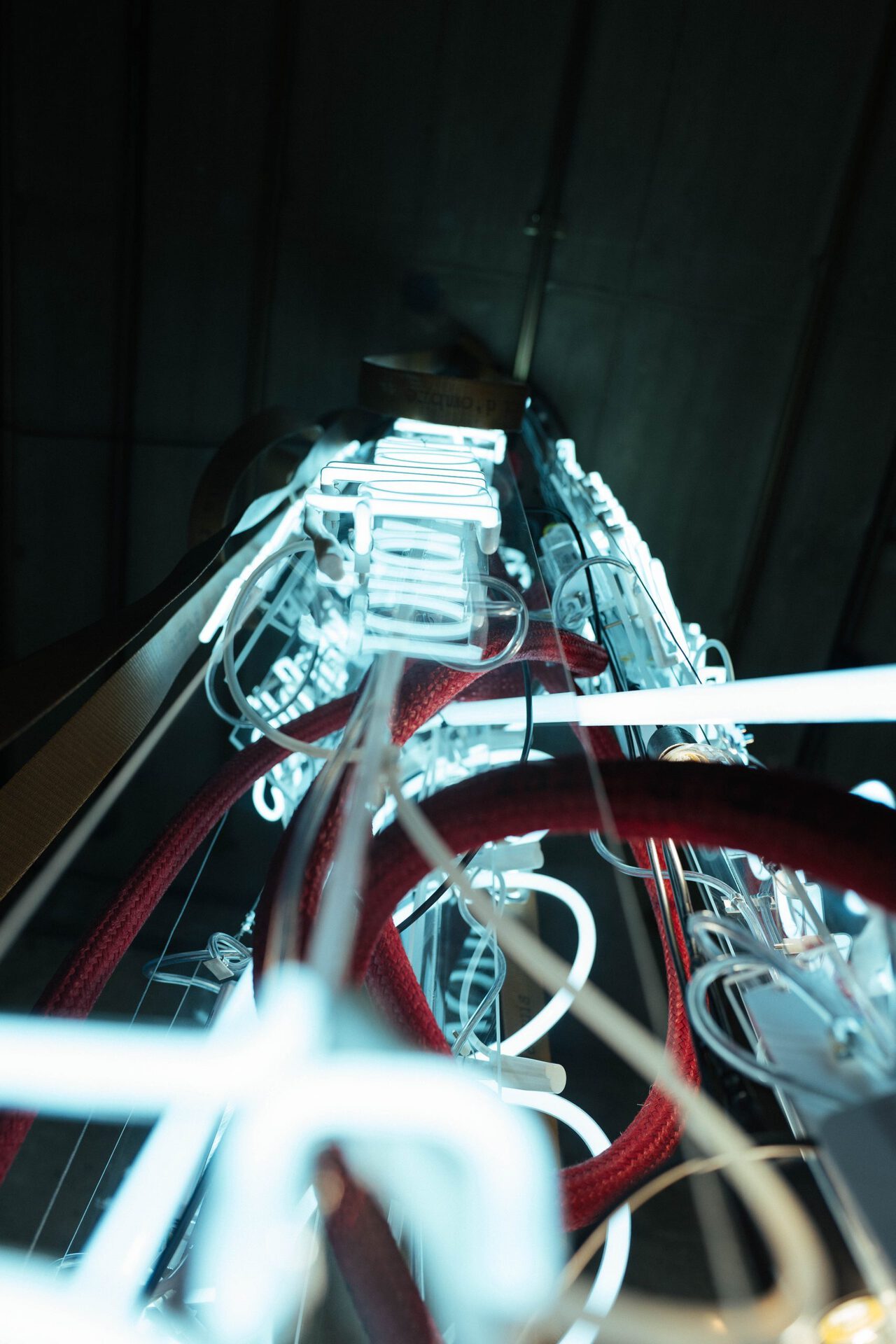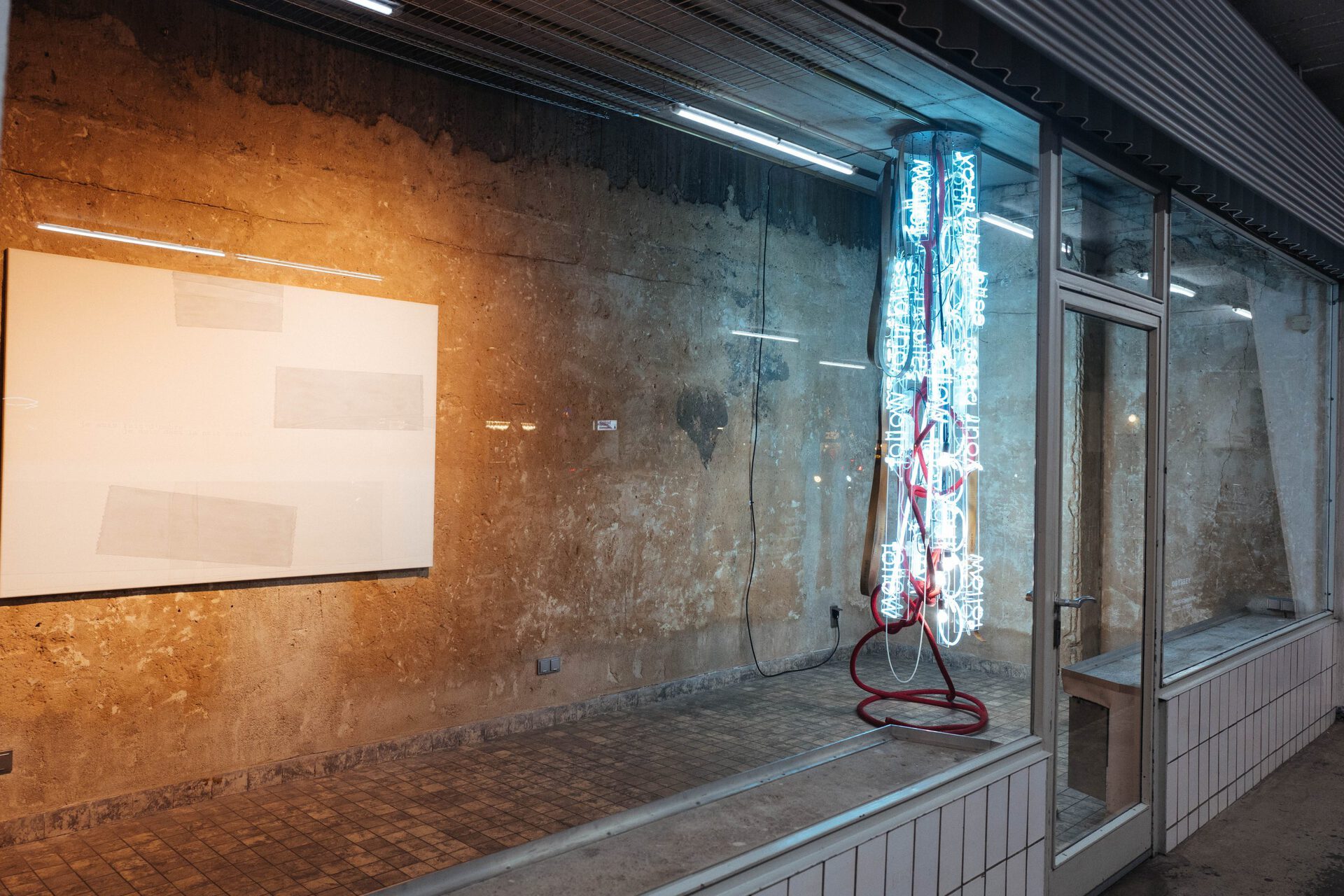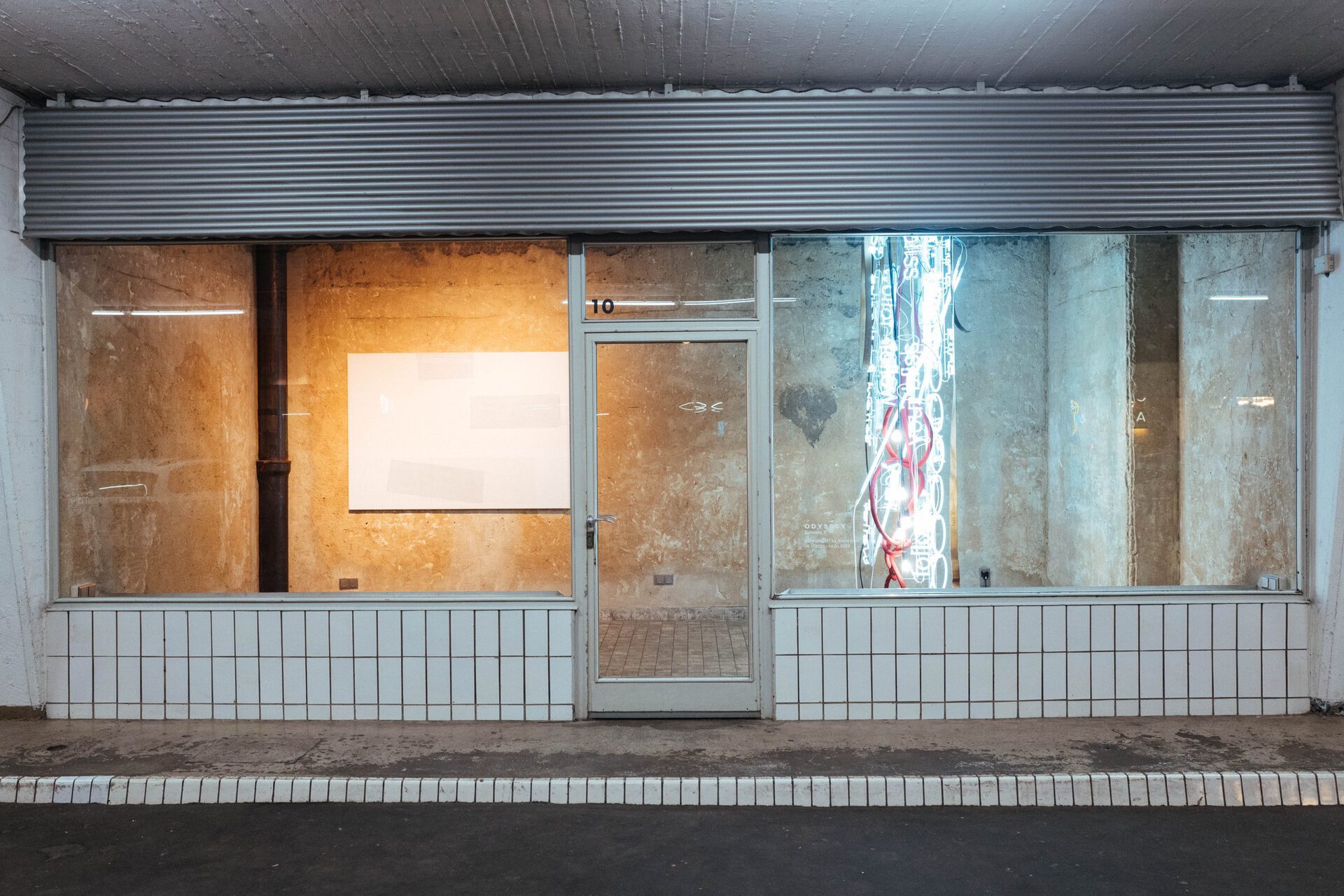Archive
2021
KubaParis
Sehnsucht










Location
OdysseyDate
17.11 –02.03.2022Curator
Sven Oliver Pink, Ashraf SplittgerberPhotography
Marvin OdenthalText
- The Odyssey exhibition series
The path to the fulfilled self is the most difficult journey for many people. Already in Homer 3,000 years ago, this path is told as a hero's journey, which each of us starts again and again in big and small ways. The psychologist C.G. Jung researched that we humans repeatedly go through 12 similar, psychological phases in which we react to our experiences in similar patterns. The mythologist Joseph Campbell later discovered that these basic patterns are also found in almost all narratives of human history and recur across all continents, times and cultures: In cave drawings, basic religious writings, but also in every corner of the present. Even Star Wars works on this principle.
It is crucial that each phase can take a positive as well as a negative development. If one fails, for example, in an optimistic phase to process a negative experience, one can become a pessimist:in. This can last until one accepts the experience, reflects on it and processes it. This is also a phase.
Depending on personal characteristics, each person may be confronted with aspects of each phase on a daily basis. Some are foregrounded and dominate life experience, others pass almost unnoticed. Some shape us continuously - even on a social level.
The exhibition Odyssey invites viewers:inside to interrogate their own journey and the emotions and phases associated with it. With the help of twelve internationally renowned artists, the exhibition is dedicated to a different form of experience each month.
2 - The artist
Astrid Klein (*1951 in Cologne) is one of the most important conceptual artists in Germany. Since the early 1980s, her works have been shown in numerous solo and group exhibitions from Seoul to Venice, from London to Chicago, and are part of the public collections of international museums, including the Tate Modern, the Victoria & Albert Museum London, the Museum of Modern Art in San Francisco, as well as the Pinakothek der Moderne in Munich or the Museum Ludwig in Cologne. In addition to sculptural works and paintings, Astrid Klein is known for her groundbreaking large-scale photographic works and collages from the 1970s and 1980s, which are considered an important contribution to the feminist avant-garde.
3 - Exhibition text - Title: Desire
In the second phase of the exhibition Odyssey, two works by Astrid Klein are presented under the title 'Sehnsucht'. The avant-garde pioneer, known worldwide for her collages, paintings and light sculptures, shows a sculpture created for the exhibition as well as a painting from 1989 from the series of 'White Paintings'. For Klein, both works relate to the hero's journey, or more precisely to the second phase, the archetype of the orphan. This follows the optimist coming from the origin, who suddenly comes up against limits in his naive urge to create.
Who in such an optimistic phase must experience and endure unforeseen disappointments, feels orphaned and is filled with longing. Led by the 'desir' to return to paradise, the orphan - desiring comfort - finds himself thrown back on himself - unwilling to feel hurt or abandoned again.
The task at this point is to deal with the feelings of helplessness that arise. If this attempt fails or is avoided, the journey stagnates. However, if the processing succeeds, it can continue.
For Astrid Klein, all lived experiences - positive and negative, including the individual shadow sides - are an essential part of the self that must be acknowledged and integrated. Continuing one's own journey means accepting one's own shadow and going on the further journey with it. The works shown here reflect Klein's own approach to that orphanhood - each in a different way, but united in the key phrase "Je suis fait d'ombre" ("I am made of shadow").
MATERIAL
"Je suis fait d'ombre" ("I am made of shadow") is written as an inscription on the red rope, here part of the vertical light sculpture that the viewer:in facing. As a red Ariadne's thread, this realization coats and runs through the interior, which appears confused, just as one's own path does to the orphaned. In this center the light is banished in literal matter and calls: "Follow Your Bliss", ("Follow your happiness"). Go on your journey accompanied by the shadow.
Jannik Schäfer